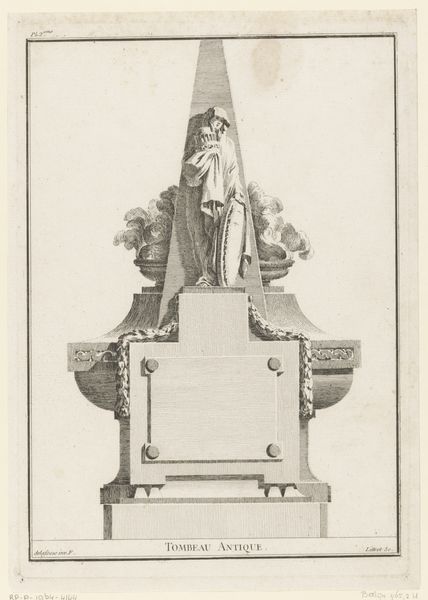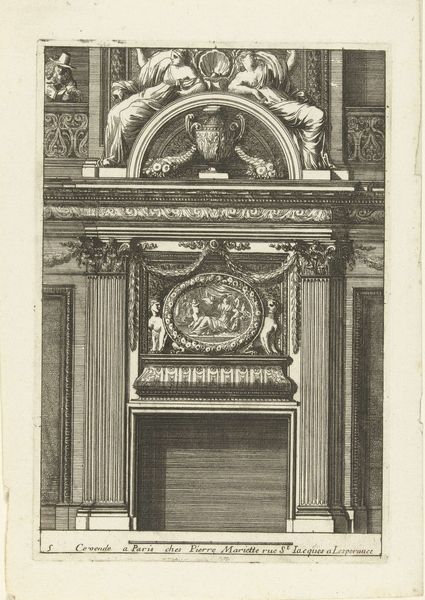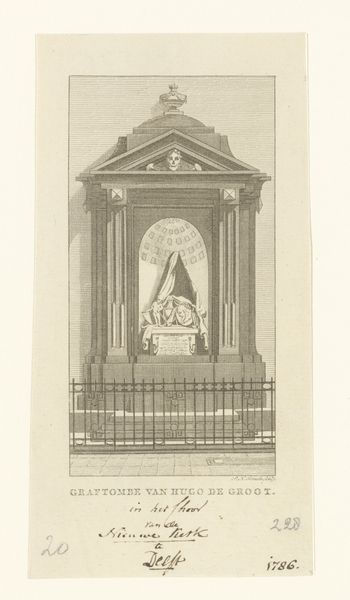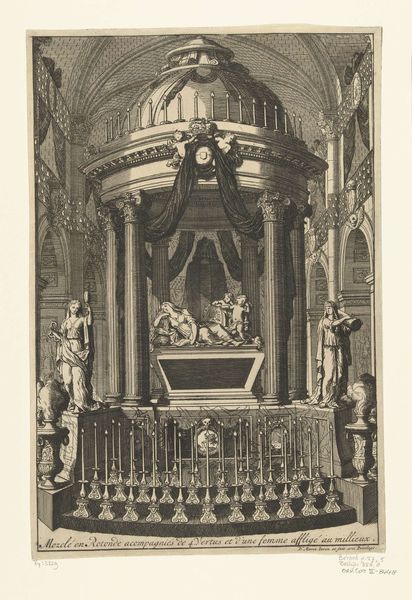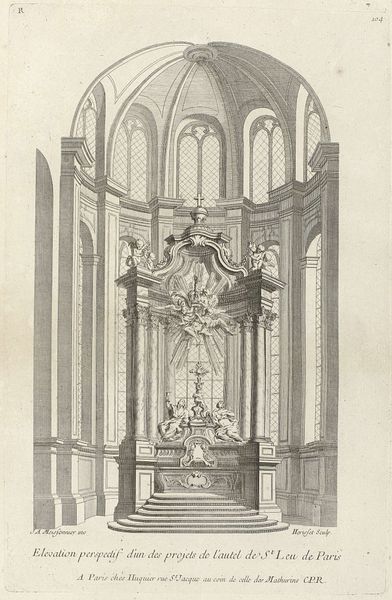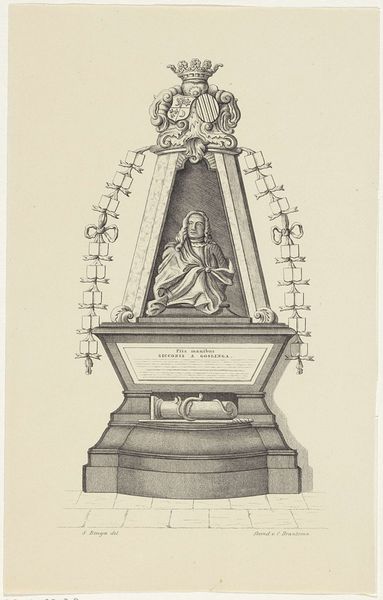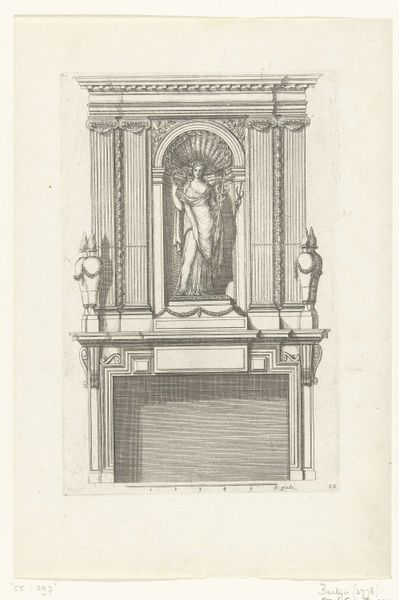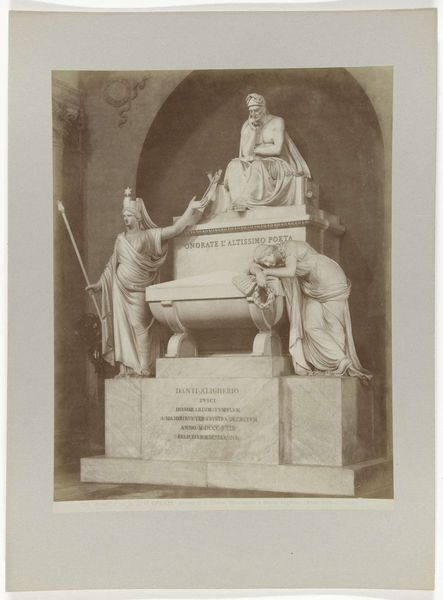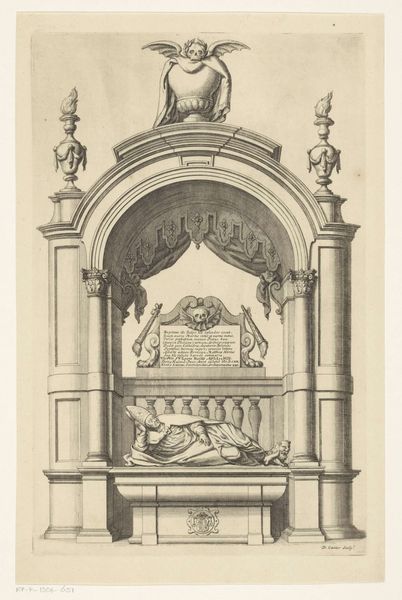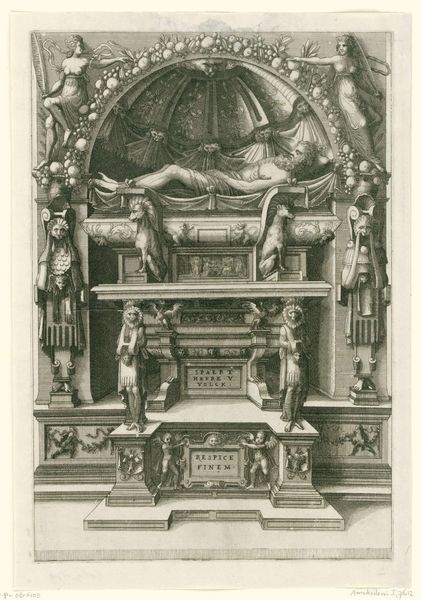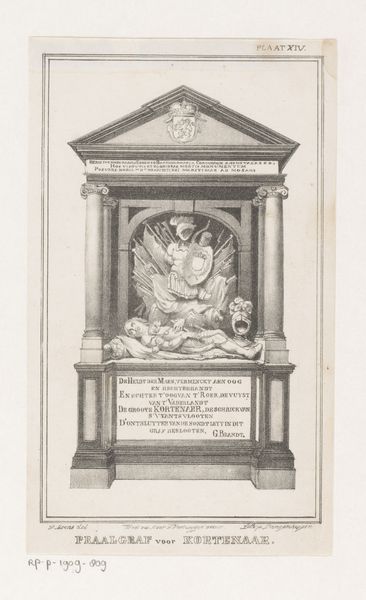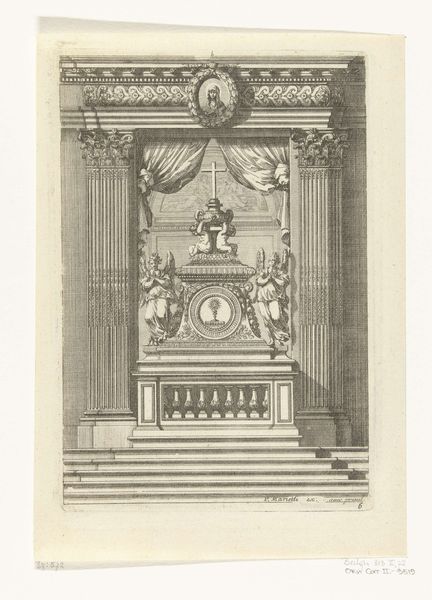
print, engraving
#
portrait
#
neoclacissism
# print
#
old engraving style
#
19th century
#
cityscape
#
history-painting
#
engraving
Dimensions: height 427 mm, width 624 mm
Copyright: Rijks Museum: Open Domain
Curator: Looking at this print, made in 1786 by Johan van der Spruyt, we see the tomb of Hugo de Groot, who passed away in 1645. The print resides in the Rijksmuseum's collection. Editor: It is a stark but beautifully rendered neoclassical image, somber in tone due to the monochromatic engraving. The precision in the architectural detail strikes me. The sharp contrast enhances the overall dramatic feel. Curator: Indeed. The artist, working in the Neoclassical style, seeks to convey a sense of order, rationality, and civic virtue, very typical for this movement, which reacted to the excesses of the Baroque and Rococo. Hugo de Groot himself was a key figure, and his tomb becomes a symbol of legal and intellectual achievement. Editor: Visually, I'm drawn to the interplay of light and shadow within the structure, how the engraver managed to give form to the marble-like surfaces. Did you also notice the skull at the top? Curator: I did! It's a potent memento mori, serving as a reminder of mortality, quite common in memorial art throughout history. The cityscape or town view within the tomb's arch alludes to de Groot's world—his intellectual domain, his community and the ideas he shaped. The iron bars add a sense of distance between us and the object. Editor: That dome is constructed like a visual puzzle—a delicate assembly that serves both architectural and symbolic purposes. The formal geometry reinforces the rationality the engraver sought. Curator: And in considering that rationality, we should reflect on how the print itself, as a multiple, extends the reach of de Groot's legacy and ensures its continuity within the Republic's collective memory. Editor: A very interesting way of seeing it, connecting visual structures and political life to enhance public understanding of Hugo de Groot's life. Curator: Right. What the piece means as both a symbolic object and historical document remains incredibly evocative for contemporary audiences.
Comments
No comments
Be the first to comment and join the conversation on the ultimate creative platform.
